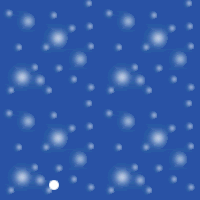|
HEZEKIAH TUNNEL
The Hezekiah's Tunnel, also known as the Siloam Tunnel, is an impressive ancient water tunnel located in the City of David in Jerusalem. Here are the detailed aspects of the tunnel:
Length:
- The tunnel is approximately 533 meters (1,750 feet) long. However, due to its winding and S-shaped path, it is significantly longer than a direct route between the Gihon Spring and the Pool of Siloam, which would have been around 330 meters.
Depth:
- The tunnel is carved through solid bedrock beneath the City of David. The overburden (the rock above the tunnel) varies along its course, reaching up to 50 meters in some sections. The tunnel's ceiling height also varies, sometimes being quite low, requiring visitors to stoop or wade through water up to their hips. The height difference between the entrance at the Gihon Spring and the exit at the Pool of Siloam is only about 30 centimeters (12 inches), demonstrating the remarkable engineering feat of maintaining a consistent, gentle gradient (approximately 0.06 percent) to allow water to flow.
Completion Date:
- The tunnel is widely believed by most scholars to have been completed around 701 BCE, during the reign of King Hezekiah of Judah. This dating is supported by:
- Biblical Accounts: 2 Kings 20:20 and 2 Chronicles 32:2-4, 30 describe Hezekiah's efforts to secure Jerusalem's water supply in anticipation of an Assyrian siege by King Sennacherib.
- The Siloam Inscription: Discovered within the tunnel in 1880, this ancient Hebrew inscription recounts the dramatic moment when the two teams of excavators, working from opposite ends, met in the middle. The paleography (style of writing) of the inscription dates it to the late 8th century BCE, aligning with Hezekiah's reign.
- Radiometric Dating: Carbon-14 dating of organic material found within the tunnel's plaster lining has also supported a construction date around 700 BCE.
Purpose:
The primary purpose of the Hezekiah's Tunnel was to secure Jerusalem's water supply during the anticipated siege by the Assyrian army led by Sennacherib.
- Diverting the Gihon Spring: The Gihon Spring was Jerusalem's main source of fresh water. However, it was located outside the heavily fortified city walls on the eastern slope of the Kidron Valley, making it vulnerable to a besieging army.
- Bringing Water Inside the City Walls: Hezekiah ordered the construction of the tunnel to divert the waters of the Gihon Spring and bring them to a newly constructed pool, the Pool of Siloam, located on the southwestern side of the City of David, safely within the city walls.
- Denying Water to the Enemy: By concealing the original outlet of the Gihon Spring and channeling the water underground into the city, Hezekiah aimed to deprive the Assyrian forces of a readily available water source, weakening their ability to sustain a long siege.
- Ensuring Water for Jerusalem's Inhabitants: The tunnel ensured a reliable and protected water supply for the population of Jerusalem during the siege, which was crucial for their survival.
The construction of Hezekiah's Tunnel is considered a remarkable feat of ancient engineering, especially considering it was achieved without modern surveying equipment. The fact that two teams digging from opposite ends through solid rock managed to meet with such precision, maintaining a consistent gradient for water flow, continues to baffle engineers and archaeologists today. The tunnel stands as a testament to the ingenuity and strategic thinking of King Hezekiah in preparing Jerusalem for a major military threat.
|
![]()
